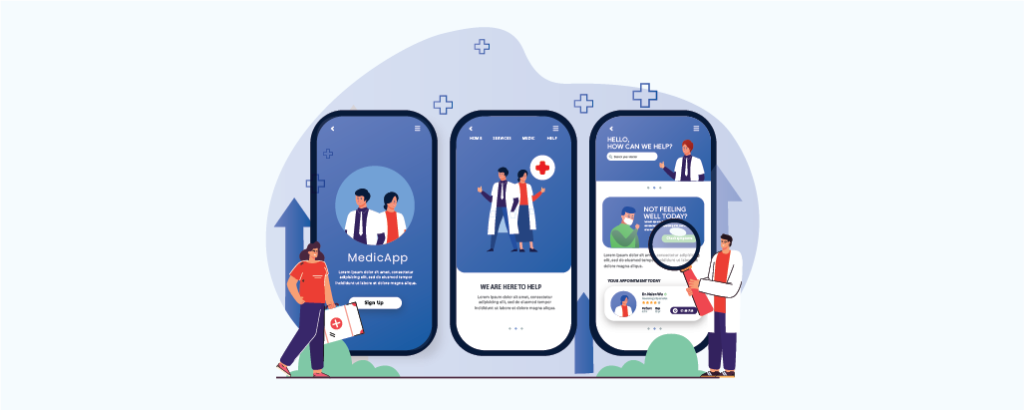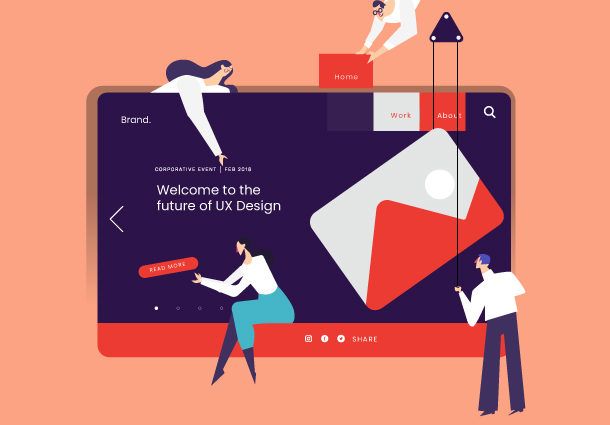The nexus of UX/UI in healthcare: A Prelude
In today’s fast-facet world of growing industries, the medical care sector has long been noted as one of the most reluctant to adopt new technology and digitalization. But during the past few years, the company has entered a period of more notable modernization with new inventions. The pandemic and the need for greater social segregation served to some extent as prods for the industry to proceed in the direction of various computerized medical care solutions in order to provide basic types of support while lowering gambles. With the increase in digital transformation, the need to offer a positive UX design in healthcare has also grown. This applies not only to telehealth but also to administrative, diagnostic, and treatment solutions used by medical professionals.
As we see, within the realm of healthcare, while challenges persist, there exists a realm of substantial opportunities awaiting adept designers. A pressing demand for an improved user experience underscores this pursuit. In an optimal context, this enhanced experience possesses the potential to be lifesaving. However, this call for improvement is not solely driven by urgency; it’s also a response to a transformative shift. Health no longer remains within the confines of medical facilities. The internet has empowered individuals to assume greater agency over their well-being, necessitating meticulous attention to the user experience of digital health products. In essence, the convergence of necessity and evolution underscores the significance of excelling in the UX design of healthcare technologies.
Exploring the essence of UX design in healthcare: From pixels to patients
With re-industrialization, the concept of Healthcare UX gradually gained prominence, leading to the emergence of specialized UX Designers focusing on healthcare-related endeavors. Notably, educational programs such as the Human-Computer Interaction Masters included dedicated modules addressing healthcare-oriented subjects, underlining the evolution of this field. This progress is further underscored by the establishment of dedicated 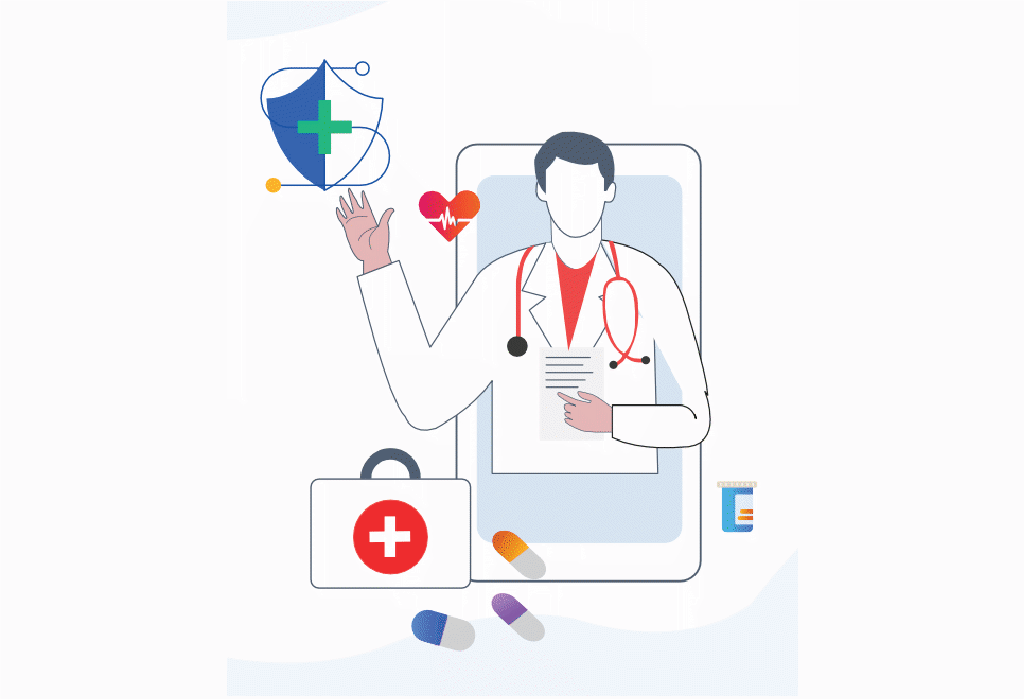 UX conferences that exclusively address the intersection of UX and healthcare, highlighting the recognition of this distinctive discipline within the broader UX domain.
UX conferences that exclusively address the intersection of UX and healthcare, highlighting the recognition of this distinctive discipline within the broader UX domain.
Quintessential, healthcare user experience (UX) represents a complex and distinctive UX design approach, embracing a wide range of difficulties and opportunities. The goal of this specialized field is to create user experiences that are specifically suited to healthcare environments, taking into account the unique needs, sensitivities, and subtleties that are inherent to the healthcare industry. Healthcare UX is dedicated to improving the quality of healthcare services, improving patient outcomes, and optimizing processes for healthcare workers. This commitment extends from the design of user-friendly interfaces for medical devices to the development of intuitive electronic health record systems. Its significance is increased by the possibility that it will have a favorable impact on variables including patient safety, treatment adherence, and general user satisfaction. As a result, Healthcare UX plays a crucial role in bridging the gap between technology and healthcare and offers substantial advantages to both healthcare professionals and patients.
Effective healthcare UX design plays a pivotal role in empowering patients to make informed choices, alleviating anxiety, and mitigating uncertainty. This, in turn, contributes to error reduction, enhancing diagnostic and treatment efficiency, and addressing cognitive overload, a frequent cause of practitioner burnout. The advent of digital transformation in healthcare has yielded a range of transformative outcomes:
1. Promoting Patient-Professional Connectivity: Learning about a patient’s core problem is the biggest aspect for doctors/physicians. By integrating digital tools, improved patient-physician communication has been facilitated, while the use of electronic health records has been optimized.
2. Facilitating Remote Patient Care: Now that it’s not possible to move all around the world for better diagnosing from high-class doctors, digitalization has made it possible to treat patients remotely, expanding access to healthcare beyond geographical limitations and improving patient satisfaction.
3. Personalized Healthcare Delivery: Digital technologies enable personalized healthcare, enhancing patient-centric services, through improved planning and predictive care delivery. Due to hectic schedules and a busy lifestyle, personalized healthcare delivery has made it easier for people to look after their health and medicines without missing or forgetting things.
4. Improved Preventative and Treatment: Digitalization supports more efficient preventative and treatment strategies by utilizing patient data from IoT devices and cutting-edge data analysis. Due to this, patients are somehow now able to get immediate treatments and medications on time.
5. Reduced Diagnostic Errors: Using sophisticated image and data analysis to examine scans, pictures, and test results helps to improve diagnosis while lowering human mistakes. For this reason, it has become possible to know the exact condition of the patient and the diseases too.
6. Streamlined Organizational Processes: Internal operations benefit from optimization through the automation of administrative and repetitive tasks. Routine procedures can be streamlined to improve productivity, free up resources for higher-value tasks, lower errors, and provide a more flexible and productive operational environment.
Horizons of healing: Envisioning the future of healthcare UX design
The trajectory of Healthcare UX Design is undeniably intertwined with the evolution of technology, holding the potential to significantly enhance care outcomes. As healthcare tools and solutions continue to advance, the role of UX becomes even more critical in shaping the future of patient experiences. The ongoing transformation of technology will inherently drive shifts in UX design, leading to innovative approaches that cater to a broader audience through these novel tools. This imminent future of healthcare UX design is underpinned by three fundamental values:
1. Accessibility: As technology advances, it becomes increasingly important to make sure that healthcare solutions are available to everyone. It is essential to accommodate new developments while maintaining the current requirements for navigation and accessibility. Designing interfaces that are compatible with the wide range of emerging healthcare equipment and smoothly connect with assistive technology is required for this. The objective is to fill in any gaps so that users with different skill levels can take advantage of these developments equitably.
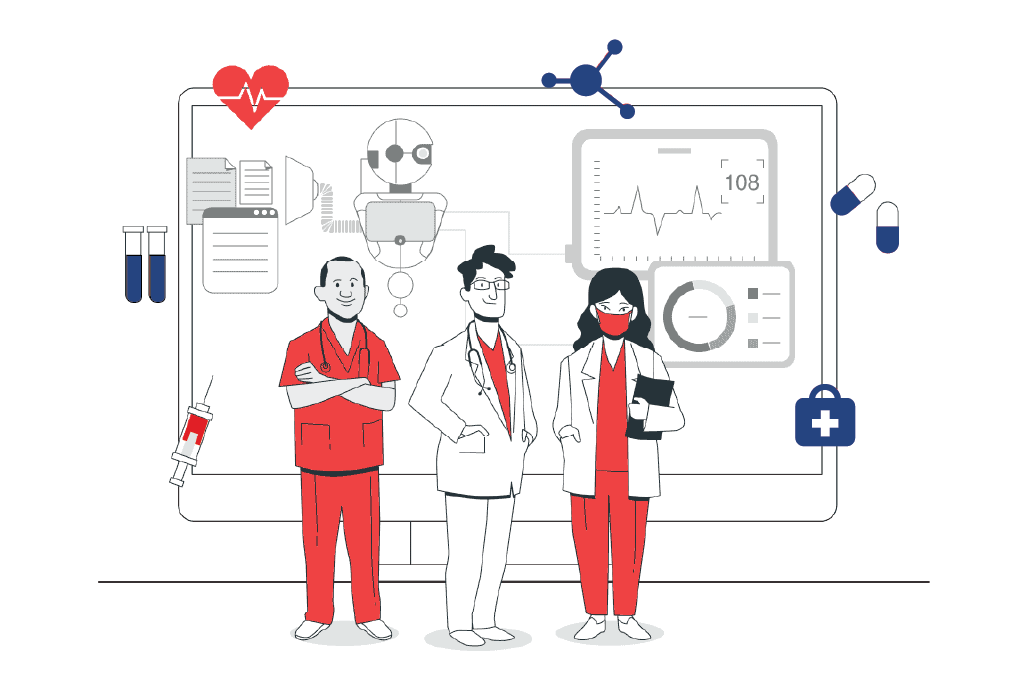
The creation of user interfaces that effectively integrate the wide range of developing medical technology is essential to providing total accessibility. The foundation of an inclusive healthcare ecosystem is formed by the complex interplay between these interfaces and assistive technology. The purpose of establishing this link is to build a harmonious relationship between users and technology in order to expand the reach and impact of healthcare advancements.
2. Adaptability: The rapid pace of technological change necessitates a UX design that can swiftly adapt to evolving trends. From telemedicine platforms to wearable devices, these tools introduce greater accessibility and options for diverse patient and user profiles. While these innovations offer expanded capabilities, the efficacy of the user experience hinges on the design’s adaptability. UX designers must craft interfaces that seamlessly accommodate both current and future technologies, catering to the diverse needs and preferences of users across different devices and platforms.
These technological advancements, which range from the expansion of telemedicine platforms to the incorporation of wearable technology into healthcare regimens, herald in a new era of accessibility and possibilities for a broadening range of patient and user profiles. The advantages provided by these advances are certainly revolutionary and provide expanded opportunities for participation and engagement in one’s healthcare journey.
3. Clarity: Amid the proliferation of healthcare technologies, maintaining clarity in design is pivotal. User interfaces should facilitate intuitive navigation, ensuring that patients and healthcare providers can effortlessly engage with the tools at hand. Streamlined usability features, concise information presentation, and intuitive workflows all contribute to enhancing the user experience. Clarity in design minimizes confusion, empowers users to make informed decisions, and ultimately contributes to more effective healthcare interactions.
A key component of design clarity is features that have been simplified for usability. UX designers streamline the user experience to its core and get rid of unnecessary components to increase its effectiveness. Every interaction is painstakingly designed to add significantly to the user’s goals, creating a setting where each click, swipe, or tap represents a meaningful step forward. Another essential aspect of clarity is conciseness in the presentation of information. The capacity to concisely explain crucial details is crucial in a time when information overload is a pervasive concern. In order to offer pertinent information in a way that is understandable and simple to navigate, UX designers use their knowledge to curate material.
The future of healthcare UX design aspires to create a comprehensive system that offers inclusive and equitable care experiences for all, regardless of their backgrounds or abilities. This entails not only technical compatibility but also a profound understanding of users’ needs, aspirations, and challenges. By designing interfaces that prioritize accessibility, adaptability, and clarity, healthcare UX professionals play a pivotal role in ushering in an era of more accessible, personalized, and effective healthcare services. In this vision, the boundaries between technology and healthcare seamlessly blur, enabling users to receive care in a manner that best suits their preferences and circumstances.
Bringing it all together: An inclusive summary
UX in healthcare serves as a potent conduit that combines the complex fields of human connection and medical technology, in summary. Through user-friendly interfaces, sympathetic design, and effective workflows, it demonstrates a dedication to humanizing healthcare. UX in healthcare plots a course towards a future in which the fusion of design thinking and medical science ushers in an era of optimized experiences, improved outcomes, and ultimately better lives as it navigates the complexities of patient needs, provider demands, and technological advancements.
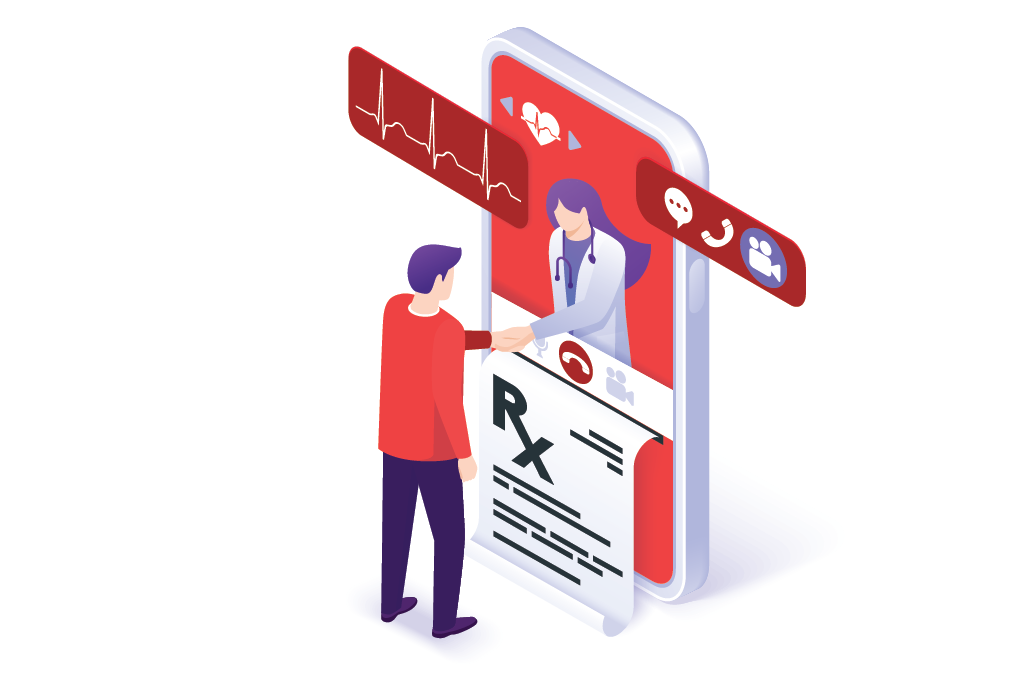 In conclusion, the development of UX in healthcare is evidence of the successful fusion of creativity and compassion. Its importance as a driving force in contemporary healthcare systems is underscored by its capacity to improve communication, empower patients, and lessen the burdens on healthcare workers. UX in healthcare is poised to revolutionize the way we approach healthcare delivery by adopting the ideas of user-centered design, continuous improvement, and technological integration. It will make healthcare delivery more accessible, effective, and human-centric than before.
In conclusion, the development of UX in healthcare is evidence of the successful fusion of creativity and compassion. Its importance as a driving force in contemporary healthcare systems is underscored by its capacity to improve communication, empower patients, and lessen the burdens on healthcare workers. UX in healthcare is poised to revolutionize the way we approach healthcare delivery by adopting the ideas of user-centered design, continuous improvement, and technological integration. It will make healthcare delivery more accessible, effective, and human-centric than before.
Navigate the path of superiority by choosing Pattem Digital
A convincing alternative for improving User Experience (UX) is using Pattem Digital. The approaches used by Pattem Digital are focused on accuracy and user-centricity, providing a seamless fusion of aesthetics and functions. We develop a thorough grasp of user behaviors and preferences by methodically guiding projects from research to development. Working together with a targeted strategy produces intuitive, aesthetically pleasing interfaces that connect with consumers, ultimately increasing their pleasure. Additionally, Pattem Digital is one of the Leading User Experience Design Company whose collaborative culture unites UX specialists, designers, and developers, encouraging a smooth and efficient workflow. Make the decision to work with us by enabling companies to develop user-centered, powerful digital experiences that resonate and boost brand engagement.
